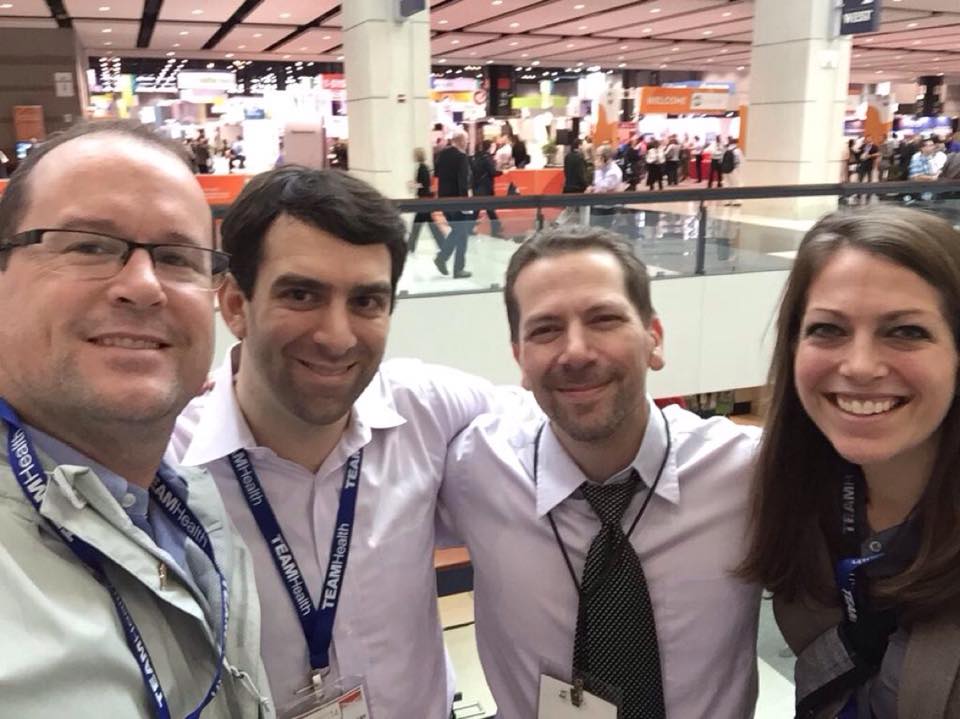(ITUNES OR LISTEN HERE)
FOAMcast is bringing you pearls from conferences we attend and, first up, the American College of Emergency Physicians annual meeting, ACEP14. Yesterday’s episode covered the council meetings.
Scientific Assembly Day 1 Pearls
Opening Session by Freakonomics hosts Steven Levitt and Stephen Dubner. Weird choice? It turns out that economists and physicians have a lot in common. What’s that? Probabilities. As physicians we like to think of ourselves as diagnosticians, but we’re more like probalisticians. We make predictions, hopefully based on the best evidence, our clinical expertise, and our patient’s values. People don’t remember the little stuff, like extra testing but they do tend to remember the more outlandish things, like the “amazing saves” or awful “misses.”
- See this post by Dr. Simon Carley, in which he describes the ways in which physicians are really playing the odds and gambling.
Cardiology Pearls from Dr. Slovis.
- Post cardiac arrest – targeted temperature management to 35-36 Celsius is the new 33 Celsius [Nielsen].
- Many patients should probably go to the cath lab after arrest, but it’s still not clear exactly who benefits the most. STEMIs should probably go to the cath lab and, perhaps, non-STEMI ventricular fibrillation/tachycardia arrests. Apparently, 10-30% of these are actually STEMIs “on the inside” [More skeptical takes on this from Dr. Radecki here and here]
Infectious Disease Pearls from Dr. David Pigott – When someone returns from a developing nation, say, West Africa, the cause of their fever is not necessarily ebola. It’s probably an unknown, regular virus. It’s probably not ebola but it may be malaria which is quite common.
- His thoughts on predictors of badness: Symptoms typically appear within 8-10 days although the “watch” period is 21 days. If a patient is in their second week of symptoms and are hemodynamically stable, then the patient has a pretty good shot.
Tox Pearls from Dr. Tim Erickson
- Calcium channel blocker toxicity – you can try fluids, calcium, atropine, and vasopressors. For sick patients, however, insulin is the best bet (Note, FOAM is ahead of the curve: post on the lack of utility in glucagon from 2012).
- Insulin bolus of 1 unit/kg followed by a drip of 1 unit/kg/h. Add dextrose at about 0.5 mg/kg/h, depending on their glucose.
- Check glucose and potassium every 30 minutes, with the goal to keep the potassium 2.8-3.2, per Goldfrank.
- Cyanide toxicity (discussed here) – if you’re thinking about it, please do NOT wait on a cyanide level, or any labs. Treat, with the current recommendation of intravenous hydroxocobalamin. There’s some discussion on the use of intramuscular cobinamide, which would be great in situations without IVs; however, this is largely untested in humans presently [Bebarta et al].
- Beware of cognitive biases, such as anchoring. For example, lactic acidosis isn’t always sepsis, cyanide, or carbon monoxide. Metformin associated lactic acidosis is also a thing.
Dr. Scott Weingart – Catch the CO2 Wave (podcast). End tidal CO2 (ETCO2) – ETCO2 has become essential in monitoring patients in the ED. With anything we monitor, we really need to understand what we’re looking at as well as the interventions.
- ETCO2 does NOT = PaCO2.
- In most patients, the PaCO2 will be ~3-5 mmHg higher than their ETCO2.
- This is because ETCO2 is really a measure of: PaCO2 (or production) but also cardiac output and alveolar ventilation. Thus, the ETCO2 may be falsely low in a patient with significant dead space, such as COPD, or with impaired cardiac output (heart failure).
For updates, follow #ACEP14
